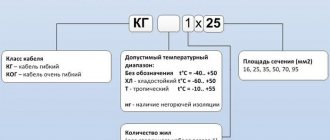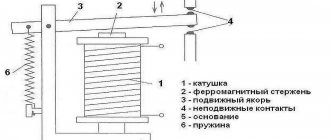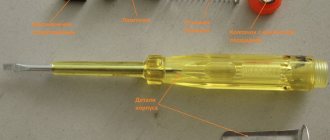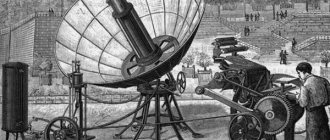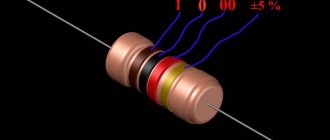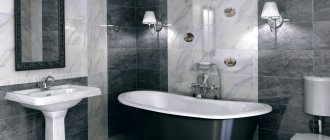Probably every reader of this article noticed that most electrical appliances operating from a household network are designed for a voltage of 220 V/50 Hz. Hence the conclusion - these are the parameters provided to us by the electricity supplier. Unfortunately, this is not entirely true. We may assume that tap water is completely pure, but experience tells us that it contains impurities that impair the taste. The same “impurities”, in the form of additional frequencies and pulses, reach the electricity consumer. This is interference in the electrical network.
Interference classification
All network deviations can be classified according to two criteria: the origin of noise and the type of electromagnetic anomaly.
The causes of network distortions are:
- natural phenomena (thunderstorm, ionization of air by auroras, etc.);
- man-made influences (accidents on lines, switching of powerful devices, etc.);
- electromagnetic waves of natural and man-made origin.
The above reasons can cause a series of impulse noise or harmonic distortion waves superimposed on top of the sinusoidal current.
The presence of pulse currents in the network has a very harmful effect on the operation of modern household appliances, often saturated with electronics. If you do not use protective devices, electronic devices may fail, not to mention the quality of their operation. Of course, developers protect sensitive equipment with integrated noise suppression circuits, but additional external devices are often required, for example, uninterruptible power supplies, surge protectors (Fig. 1) and others.
Rice. 1. Protective pulse filters
Under radio frequency interference, most household appliances can operate normally. But radios, televisions and some medical devices are sensitive to them. However, modern digital radio electronics are quite well protected from such distortions.
Understanding the causes of distortions in the electrical network helps to solve equipment protection problems and consciously approach the selection of optimal noise suppression schemes.
Literature
1.
2. Corcom Product Guide, General purpose RFI filters for high impedance loads at low current B Series, TE Connectivity, 1654001, 06/2011, p. 15
3. Corcom Product Guide, PC board mountable general purpose RFI filters EBP, EDP & EOP series, TE Connectivity, 1654001, 06/2011, p. 21
4. Corcom Product Guide, Compact and cost-effective dual stage RFI power line filters EMC Series, TE Connectivity, 1654001, 06/2011, p. 24
5. Corcom Product Guide, Single phase power line filter for frequency converters FC Series, 1654001, 06/2011, p. thirty
6. Corcom Product Guide, General purpose RFI power line filters - ideal for high-impedance loads K Series, 1654001, 06/2011, p. 49
7. Corcom Product Guide, High performance RFI power line filters for switching power supplies T Series, 1654001, 06/2011, p. 80
8. Corcom Product Guide, Compact low-current 3-phase WYE RFI filters AYO Series, 1654001, 06/2011, p. 111.
Obtaining technical information, ordering samples, delivery - e-mail
Network and signal EMI/RFI filters from TE Connectivity. From board to industrial installation
TE Connectivity is a world leader in the design and manufacture of surge protectors for effective suppression of electromagnetic and radio frequency interference in electronics and industrial applications. The model range includes more than 70 series of devices for filtering both power circuits from external and internal sources, and signal circuits in a wide range of applications.
The filters have the following design options: miniature for installation on a printed circuit board; cabinets of various sizes and types of connection of supply lines and load lines; in the form of ready-made power connectors and communication connectors for network and telephone equipment; industrial, made in the form of ready-made industrial cabinets.
Surge filters are produced for AC and DC applications, single- and three-phase networks, covering the range of operating currents 1...1200 A and voltages 120/250/480 VAC, 48...130 VDC. All devices are characterized by a low voltage drop - no more than 1% of the operating voltage. The leakage current, depending on the power and design of the filter, is 0.2...8.0 mA. The average frequency range for the series is 10 kHz...30 MHz. AQ series is designed for a wider frequency range: 10 kHz...1 GHz. Expanding the applications of its products, TE Connectivity produces filters for low and high impedance load circuits. For example, high impedance filters of the EP, H, Q, R and V series for low impedance loads and low impedance filters of the B, EC, ED, EF, G, K, N, Q, S, SK, T, W, X, Y and Z series for high impedance loads.
Communication connectors with built-in signal filters are available in shielded, paired and low-profile designs.
Each filter produced by TE Connectivity undergoes double testing: at the assembly stage and already in the form of a finished product. All products comply with international quality and safety standards.
•••
Sources of interference
Both natural phenomena and various man-made equipment can distort an alternating current sinusoid. As a result of their actions, the following occurs:
- short-term voltage dips;
- deviations from nominal frequency parameters;
- changes in electrical harmonics;
- fluctuations in current amplitude;
- HF noise;
- impulse bursts;
- common mode interference.
Let us briefly look at the main sources causing the listed deviations.
Voltage dips.
This phenomenon is a consequence of the operation of switching devices in power systems. This happens when a short circuit occurs on the lines, as a result of starting powerful electric motors, and in other cases associated with changes in load power. The presence of such short-term interference is inevitable when automatic protective equipment is triggered, and they cannot be eliminated by the electricity supplier.
Changes in frequency characteristics.
Deviation from the specified frequency occurs as a result of a significant change in the load current. If the level of energy consumed exceeds the power of the generated installations, the rotation of the generator slows down, which leads to a drop in frequency. When the load is reduced, the generation frequency increases.
Automation regulates power distribution, right up to switching off loads, but frequency interference is still present in the network.
Harmonics.
The source of this type of distortion is the presence in networks of equipment with a nonlinear current-voltage characteristic:
- converter and rectifier substations;
- arc furnaces;
- transformers;
- welders;
- TVs;
- cycloconverters and many others.
Electric motors can cause harmonic distortion, especially if they are installed at the end of a long line.
Voltage deviation
Changes in potential stability occur as a result of periodic jumps in the maximum current consumed. The source of load changes are voltage regulating devices, for example, transformers with on-load tap-changers.
A graph illustrating a short-term overvoltage is shown in Figure 2 (Fragment A - depicts a pulse surge).
Rice. 2. Network overvoltage
RF interference.
They are created by the influence of devices operating in the high-frequency range. RF interference caused by devices that generate high-frequency signals travels over the air or through network lines.
Voltage pulses.
Common sources: switching devices in networks and lightning phenomena.
Asymmetry of a three-phase system.
The cause of such interference is often powerful single-phase loads, both domestic and industrial. They cause phase angle shifts and amplitude mismatches. By turning off the power to powerful current-consuming devices, you can eliminate the problem.
EMC series filters
Filters in this series (Figure 10) are compact and efficient two-stage RF power filters. They have a number of advantages: a high coefficient of attenuation of common-mode interference in the low-frequency region, a high coefficient of attenuation of anti-phase interference, and compact dimensions. The EMC series is focused on use in devices with switching power supplies.
Rice. 10. Appearance of EMC series filters
The main technical characteristics are given in Table 4.
Table 4. Basic electrical parameters of EMC series network filters
| Rated filter currents, A | Maximum leakage current, mA | Operating frequency range, MHz | Electrical insulation strength (within 1 minute), V | Rated voltage, V | Rated current, A | ||
| ~120 V 60 Hz for currents 3; 6; 10 A (15; 20 A) | ~250 V 50 Hz for currents 3; 6; 10 A (15; 20 A) | "conductor-body" | "conductor-conductor" | ||||
| 3; 6; 10 | 0,21 | 0,43 | 0,1…30 | 2250 | 1450 | ~250 | 3…30 |
| 15; 20; 30 | 0,73 | 1,52 | |||||
The electrical circuit of the EMC series filter is shown in Figure 11.
Rice. 11. Electrical diagram of two-stage filters of the EMC series
The attenuation of the interference signal in dB when the line is loaded onto a 50 Ohm matching resistor is shown in Figure 12.
Rice. 12. Attenuation of the interference signal with EMC series filters
Methods of protection
Unfortunately, we cannot control the quality of the power grid, but it is quite possible to protect household appliances. Depending on what distortions a particular electrical device is sensitive to, the appropriate protection method is chosen. Various external devices, built-in electrical circuits, as well as shielding of structural elements and grounding help reduce noise levels.
An example of interference suppression is shown in Figure 3.
Rice. 3. Graph illustrating current filtering
The following external devices are effective:
- Surge Protectors;
- IPB;
- frequency converters;
- adjustable transformers;
- network filters and filter cascades (the schematic diagram of a simple filter is shown in Figure 4).
Network filter circuit
Suppression of high-frequency pulse distortions in the range of several tens of MHz causes particular difficulty. Often, protection applied directly to the source of interference is used for these purposes.
The use of voltage stabilizers is justified in cases of regular voltage dips in the home network. If the current is consistently too low or too high, it is better to use a transformer.
Uninterruptible power supplies have a high level of protection for computers and other sensitive electronics. Figure 5 shows a photo of an uninterruptible power supply to protect a computer.
Figure 5. UPS
These devices implement several protective functions, but the main one is supplying power to the devices for several minutes, followed by their correct shutdown. In order to achieve the maximum level of protection, it is logical to give preference to an uninterruptible power supply.
How to protect home appliances from interference
Today, there are several effective ways to combat various physical abnormalities in the operation of the electrical network:
- Voltage regulator;
- uninterruptable power source;
- network filters.
A voltage stabilizer allows you to control the voltage level in the network and, if a sharp imbalance occurs, the device will stop supplying electricity to the consumer. The stabilizer itself is connected between the voltage source and the electricity consumer itself.
Stabilizer is an effective way to protect household appliances. The device stops supplying electricity to the consumer in the event of a power surge and resumes supply when the voltage returns to normal.
True, this method of dealing with interference is not always suitable as the main one. For example, when working with a computer, it is important for the user to ensure that all unsaved text data does not disappear. In this case, it is best to use a UPS - an uninterruptible power supply. The UPS includes a regular battery, which continues to keep the computer operational for some time after interference and subsequent power surges have occurred.
A cheaper way to make home appliances immune to interference is with surge protectors. They also do their job well and are used most often when connecting large household appliances: refrigerator, washing machine.
Measurement methods
Is it possible to see network distortions?
Using instruments, you can not only see the presence of interference, but also estimate its magnitude and determine the nature of its occurrence. There are special high-precision instruments for measuring various deviations in networks. The most common of them is a regular oscilloscope.
The device has a display (screen) on which an oscillogram of the measured current is displayed. By operating various oscilloscope modes, you can determine the nature and level of noise with high accuracy.
An example waveform is shown in Figure 6.
Figure 6. Mains current oscillogram
The oscillogram shows how the main signal is surrounded by parasitic currents that need to be cut off. By analyzing the nature of distortions, you can choose a way to suppress them. It is often enough to use a surge protector to get rid of typical interference that affects the operation of devices.
VRemont.su - repair of photo video equipment, household appliances, review and analysis of the service sector market
Switching power supplies (UPS), built on the basis of DC (rectified mains) voltage to AC converters, generate unwanted interference. On the collectors (drains) of the power switches of the UPS controllers there is a voltage close in shape to rectangular, with a range reaching 600...700V. In addition, in the UPS there are closed circuits through which pulse currents circulate with fairly steep rises and falls (0.1 ... 1 μs) and an amplitude of up to 3 ... 5 A or more.
Therefore, the UPS serves as a source of intense interference, the spectrum of which extends from 16...20 kHz to tens of megahertz. This interference propagates into the AC power supply and into the load of the power supply, creating interference fringes on the screens of TVs and monitors, reducing the signal-to-noise ratio in the recording and playback paths of video recording equipment, etc. The magnitude of these spurious signals depends on the conversion frequency, the quality of the input and output filter circuits, and at frequencies above 1 MHz, on the design and wiring of the converter.
Generally speaking, PWM converters that operate with a constant switching frequency generate interference in a known frequency band, which makes it easier to suppress it and is one of the reasons for their widespread use in switching power supply circuits of household appliances.
However, switching power supplies, regardless of the type of PWM converter used, must be equipped with circuits for suppressing two main types of interference. These noises are input single-ended (differential) and input symmetric (common-mode) noise.
We will consider the mechanisms of occurrence, propagation and methods of combating these noises in switching power supplies using the example of the corresponding equivalent circuits of converters.
Fig.1 Occurrence of asymmetrical interference
Input unbalanced noise is a noise current, the flow of which is caused by the voltage difference Vin between the two input conductors (Fig. 1). The key transistor of the converter is shown in the figure as a switch Fs, which is sequentially turned on and off at the operating frequency of the converter. The load is depicted as a variable resistor RL, the resistance of which varies depending on the load current. Passive elements L and C correspond to the input filter built into the converter. In addition, almost all converters are equipped with an input capacitor Cb, and some also have at least a small series inductance (choke) taken into account in the source impedance Zs (Zs also takes into account the self-inductance of the smoothing electrolytic capacitor of the mains rectifier).
Effective suppression of asymmetrical noise is achieved through the shunt action of the capacitor Cb, which must be of high quality and characterized by low equivalent series inductance (ESI) and resistance (ESR) in the appropriate frequency range (usually in the region of switching frequencies and above). In real circuits, Cb is usually a constant capacitor of 0.1 ... 1.0 μF, a shunt electrolytic capacitor of the mains rectifier. In the rectifier, they simultaneously strive to use high-quality, usually tantalum, electrolytic capacitors with low EPI and ESR.
Fig.2 The occurrence of parasitic interference
Symmetrical interference occurs as follows. In the converter, the key transistor is usually installed in such a way as to ensure good thermal contact between its body and the power supply chassis (radiator). In order to ensure maximum heat transfer, the thickness of the electrical insulation between the collector or drain of the switch transistor and the chassis is made as small as possible. As a result, a parasitic capacitance Cp is formed between the drain or collector of the transistor and the chassis (Fig. 2). When the transistor switch is turned on or off, a disturbance current is generated, flowing from the switch through the parasitic capacitance Cp, RL and C, and then through ground back to the chassis. This current is quite small because the stray capacitance is small (typically less than 10 pF). At the same time, the filter used in the LC converter is completely ineffective against this type of interference current, since it does not flow through the filter, but bypasses it.
Symmetrical interference is suppressed using a balun transformer, which is an inductor with two windings having the same number of turns. It has a high impedance for symmetrical current, but practically zero for asymmetrical current.
Unbalanced current (including current consumption) flows into the top winding of the transformer and flows out of the bottom winding. Since the currents through these windings are equal in magnitude and opposite in direction, and the number of turns in the windings is the same, the resulting magnetic flux in the core due to the asymmetrical current is zero, although the amount of current consumed may be very large. Due to this, a core with high magnetic permeability without an air gap is usually used in a balun transformer. Moreover, it has a fairly high inductance for symmetrical current when using windings of only a few turns. A significantly smaller symmetrical interference current flows mainly through the lower winding, as well as through the upper winding in the same direction. Consequently, the balun transformer has a high impedance for symmetrical interference currents.
The following are used as additional noise suppression measures in switching power supplies::
reduction of parasitic capacitive couplings between primary (mains) voltage circuits and secondary circuits; selection of optimal switching modes of transistors and diodes, preventing sudden voltage drops; reduction of the area of circuits covered by circuits through which large pulse currents flow. The design of the UPS pulse transformer is important. The primary winding is usually divided into two equal sections, one of which is wound in the first layers of the coil, and the other in the last. Thus, all other areas are located between these sections. In addition, the primary and secondary windings are usually separated by an internal shield. Quite effective is the use of a common screen in the form of a short-circuited coil of copper foil covering the pulse transformer.
The listed measures, as a rule, are sufficient, and therefore, in household equipment, switching power supplies are usually used without shielding casings.
Fig. 3 Typical network filter and rectifier circuit
Some of the considered methods of dealing with interference in a UPS are illustrated by the example of a typical network rectifier circuit (Fig. 3) used in VM and TV designs. Capacitors C5...C8, installed in parallel with diodes D1...D4 of the bridge rectifier of the mains voltage, serve to suppress asymmetrical noise. The same role is played by capacitors C1,2, which balance the potentials of the network wire relative to the chassis of radio-electronic equipment.
Typical frequently asked questions from readers
How to find and eliminate the source of interference in an electrical circuit that makes it impossible to use powerline?
To figure out the cause of a bad signal, you need to analyze the operation of the powerline adapter on another line or check the devices already connected.
First, check the signal level on the router’s network; perhaps your router’s resources are not enough to redistribute the Internet between so many users. If the provided limit is sufficient for all rooms and receivers in them, check the operation of the lines over which powerline adapters transmit data. The next question is the type of line to which the powerline adapter is connected. The manufacturer does not recommend using extension cords for this, preferring fixed wiring. But, to test existing lines, I recommend that you temporarily use an extension cord; if the signal improves, it is likely that the reason is in the wiring. If not, check household electrical equipment that is the most powerful source of electromagnetic interference.
These include: air conditioners, washing machines, refrigerators, chargers for mobile phones, power supplies for electrical appliances.
If possible, the powerline adapter should be moved as far as possible from such devices so that they do not make adjustments to the quality of the transmitted signal. If this is not possible, connect the noise sources to the electrical circuit through a “surge filter”, which will help reduce the distortion introduced.
Another point that you should pay attention to is the permissible distance between powerline adapters. It must exceed the established norm, otherwise no tricks will help you achieve the proper signal quality.
Typical Interference
There are countless sources of interference that can cause a device to malfunction or fail. However, the most common interferences are:
● nanosecond interference, which is usually caused by the operation of mechanical contacts of switches and relays. In foreign literature, this type of interference is called EFT - Electric Fast Transients; ● microsecond interference associated with the operation of reactive elements in circuits of powerful loads (charging capacitors, as well as the release of energy accumulated in the windings of motors, solenoids, etc.). In foreign literature, this type of interference is called surge; ● interference from electrostatic discharges; Basically, this is interference that occurs when an “electrified” person touches various electrical circuits. In foreign literature, this type of interference is called ESD - Electrostatic Discharge; ● interference caused by the operation of nearby radio transmitters; ● interference from powerful natural or artificial energy sources, primarily from lightning discharges. There are Russian and international standards that stipulate requirements for electromagnetic compatibility (EMC). The standards accumulate many years of engineering experience. However, the standards themselves are difficult to digest material and are of little use for direct guidance in the design or analysis of device behavior. The standards are designed to closely simulate real-world interference when testing devices. It is advisable to divide all interference into three abstract types: ● nanosecond interference (NP); ● powerful interference (MP); ● radio frequency interference (RF). Almost all real noise can be represented as a combination of these three abstract ones. For example, EFT interference is a burst of nanosecond IR interference, and ESD is a combination of a single IR and a single MF. Therefore, if a device is resistant to all three abstract types of interference, then with a high degree of probability it will be resistant to real interference, regardless of its origin. The issue of resistance to MF is largely a matter of ensuring reliability, fire and electrical safety. Resistance to MP and RP is not considered in this article. Nanosecond Interference This type of interference is the cause of most failures. With all its diversity, nanosecond interference has some common properties: ● a single interference is almost a delta function, it has an extremely wide spectrum (up to several gigahertz); ● NP has negligible energy; unlike MP, it, as a rule, does not “burn out” radio-electronic devices, but causes a reversible failure; ● only devices with memory, such as microprocessors, counters, etc., can go astray. For purely combinational digital nodes, the concept of “failure” loses its meaning, since they automatically return to the desired state after the end of the IR. Note that analog circuits can also have “memory” in the form of capacitances or inductances. To better understand this type of interference, it is useful to refer to the IEC 61000-4-4 standard (GOST R 51317.4.4-99). It states that EFT interference should be simulated by trains of triangular pulses. The duration of the leading edge of each pulse is 5 ns, the pulse duration is 50 ns at the 50% level. The internal resistance of the pulse generator is 50 ohms, the generator must be grounded. The amplitude of the NP pulses depends on which noise immunity class the device under test should belong to, as well as on where the pulses are applied during testing (Table 1).
Tests more stringent than those indicated in the table are possible if required by the operating conditions of the device. However, in the vast majority of cases, the degrees of rigidity listed in the table are sufficient. The lightest tests apply to household appliances, the most stringent to industrial and on-board devices. NP test pulses are injected directly into the power and ground lines, without decoupling. Taking into account the fairly low resistance of the signal generator, the magnitude of the pulse currents flowing in the common wire circuit can reach enormous values. Pulse NP currents flowing through the common wire of the device create a noticeable voltage drop between different points of this wire, which can cause a failure. Test NP pulses are injected into the signal circuits through “capacitive clamps”, where all the wires coming to the device are laid in turn. The coupling capacitance is small - a few picofarads, but for NP pulses even relatively small capacitances are not a serious obstacle, their spectrum is so wide. The IR entering the device via signal circuits sooner or later ends up on the common wire (“ground”) and then passes along the same paths as the IR injected into the common wire circuit. Since, according to the standard, the amplitude of the signal NP is half that of the ground NP, a signal NP caught in the common wire in the future can no longer cause an effect worse than the ground NP. However, before the signal signal reaches the common wire, it can cause a failure directly in the circuits associated with this signal.
The standard specifies that the device under test must be placed on an insulating support at a distance of 100 mm from a solid grounded surface. This is an important requirement, since capacitive coupling is formed between the device and this surface, sometimes this alone is enough to cause a failure. In Fig. Figure 1 conventionally shows a certain device consisting of nodes 1-4. Nodes 1 and 2 are not connected to external circuits, but they can be disrupted due to the voltage drop on the internal common wire caused by the passage of noise current IGND (Figure 1 shows noise injected into the ground line). Nodes 3 and 4 are connected to external devices, so in addition to the mentioned failures, they are additionally susceptible to failures due to the interference currents I1 and I2 passing through their terminals. The two types of tests specified by the standard (ground side and signal side) complement each other. In Fig. 1, we can distinguish three components of a device’s noise immunity to IR, which are discussed below in more detail: ● internal common wire (“ground”) of the device; ● barriers; ● capacitive couplings.
Internal common wire of the device. At the moment the NP passes through the internal common wire, a noticeable voltage difference is created between its various points (“distortions”). For example, if nodes 1 and 2 (Fig. 1) are digital, assembled on TTLSh microcircuits, then a voltage difference of approximately 1 V between points “a” and “b” can cause a failure. The main role in creating a voltage drop is played not by the resistive, but by the inductive component of the common wire circuit. Due to the enormous steepness of the NP fronts, even tiny inductances of the common wire or even layers in printed circuit boards are enough to cause a failure. Consider the equivalent circuit in Fig. 2.
The source of interference is the U GEN triangle pulse generator. The rising edge of the interference is 5 ns, the duration at the 50% level is 50 ns (Fig. 3), the resistance of the interference source R GEN is 50 Ohms, as specified by the standard. The amplitude of the interference pulse is 1 kV, which corresponds to relatively “soft” tests according to Table. 1.
Capacitor C CPL represents the coupling capacitance, LW represents the inductance of the wires connected to the device. For the diagram in Fig. 1 communication capacitance C CPL consists of CX 1, CX 2 connected in parallel, plus possibly capacitances contributed by external devices. Inductance LW represents the total inductance of all conductors in the interference path, with the exception of the inductance of the common wire in the section under consideration (in our case, in section “a” - “b” in Fig. 1), which is designated as L GND. Let's assume that the inductance of the common wire L GND is 10 nH, and the inductance of the remaining circuits is 100 nH. For orientation, we note that a printed conductor 5 mm wide and 10 mm long has an inductance of more than 10 nH, a conductor 0.35 mm wide and 10 mm long has an inductance of approximately 17 nH. A square pad measuring 25x25 mm has an inductance of more than 20 nH. In Fig. Figure 4 shows the voltage drop shape across L GND for the following cases: 1. With CPL = 10 pF, LW = 100 nH. 2. With CPL = 100 pF, LW = 100 nH. 3. With CPL=0.1uF, LW=100nH. 4. With CPL=0.1uF, LW=0.
When noise passes through the inductance of the internal common wire of the device, a voltage drop sufficient to cause a failure is created. Seeing such interference using a storage oscilloscope is very difficult for a number of reasons, including the limited speed of most modern storage oscilloscopes. It follows from this that even a continuous layer of common wire will not save the device in Fig. 1 from failures, and in it “distortions” during the passage of the NP can reach tens of volts. Resistance of a device to the effects of irradiation cannot be achieved only by thickening the common wire conductors, filling the free spaces of the printed circuit board with a common wire conductor, or using multilayer boards. Due to the “thick” common conductors alone, it is possible to obtain a gain in noise immunity of approximately 1.5...3 times, which is against the background of the interference signals shown in Fig. 4 is completely insufficient. Isolating external signals using optocouplers is also considered a good way to increase noise immunity, but in fact it is not reliable protection against interference. The typical capacitance of an optocoupler is 0.5 pF; when substituting this value for C CPL, the voltage drop across the inductance L GND in the circuit in Fig. 2 is reduced to 4 V, which is still enough to cause a failure. If the device has several input/output lines isolated by optocouplers, then the CCPL capacity will be correspondingly larger. A radical reduction in the noise voltage on the internal common wire of the device can be achieved if the device is properly configured and the optimal grounding point is selected. For example, it is quite obvious that along the internal common wire of the device in Fig. 5, the interference currents in the section “a” - “b” do not flow at all, and accordingly, there is no reason for the failure of nodes 1 and 2. In the device in Fig. 5, the internal common wire of the device is divided into two parts: “clean” (“a”—“c”) and “dirty” (“c”—“d”). No interference currents flow through the “clean” part; all nodes that are potentially sensitive to interference can be connected to it (nodes 1 and 2). Interference currents flow only through the “dirty” part, with which only nodes that are insensitive to interference can be connected (nodes 3 and 4). The real picture is unlikely to be as simple as in Fig. 5.
The parasitic capacitance Cx can very rarely be concentrated only in the “dirty” part; it partially exists in the “clean” left part. Due to this capacitance, it is not possible to completely get rid of interference currents in the “clean” part of the common wire.
Alexey Kuznetsov, Adelaide, Australia.
